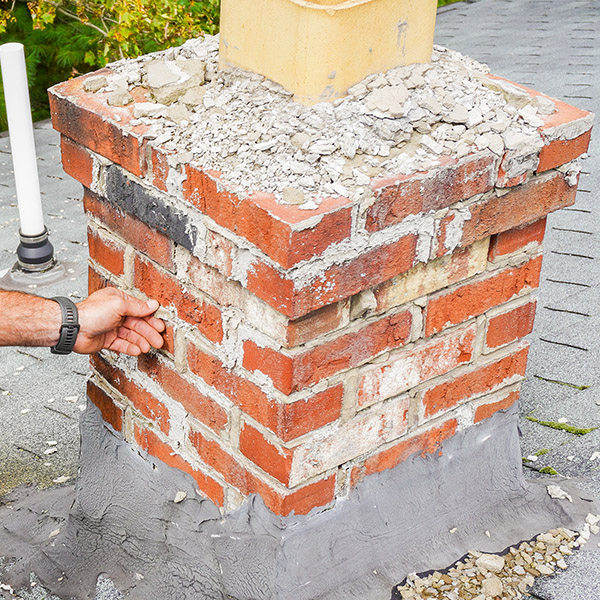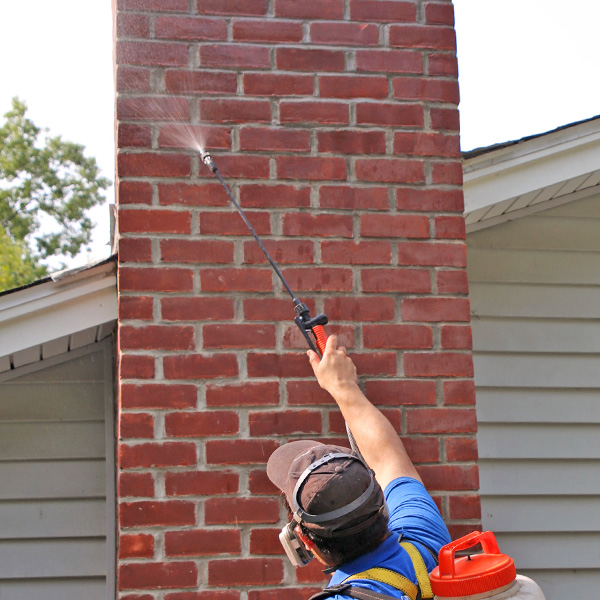How to Repair a Spalling Brick Chimney
Have you noticed that bricks on your chimney are cracked or crumbling? If you have, it means that your chimney has a spalling problem. “Spalling” or deterioration of brickwork is a common problem that occurs when moisture penetrates the bricks and mortar. As the moisture inside the masonry expands and contracts, it breaks it down causing it to crack and crumble. If this problem goes unresolved, it can compromise the entire structure of your chimney.

Conditions that Contribute to Spalling
While moisture is the underlying issue that causes spalling, there are contributing factors that make spalling more likely to occur.
– Living in a cold climate where the moisture in the bricks can freeze and thaw
– Leaking gutters, windows or roof which allow moisture to enter your home’s structure
– Using salvaged bricks to build your chimney because older bricks tend to be more porous
– Cleaning your home’s brickwork with a sandblaster or pressure washer that strip off the waterproofing sealant
Spalling Treatment
Solving the underlying problem that is allowing moisture into the masonry is the most important step in treating spalling. If the damage is addressed before the underlying problem is resolved, your chimney will continue to have a spalling problem. This is why the first step to treat spalling is a chimney inspection by a professional chimney sweep. A qualified chimney sweep will inspect the flue and brickwork to determine how water is getting into the masonry and evaluate how extensive the problem is. He will recommend the best steps for treatment based off of the inspection.
Treatment will vary depending on how water is entering the masonry and how much damage has been caused. You should follow the recommendation of the professional chimney sweep that inspects your home’s flue and chimney.
Here is a general description of the types of treatment that may be recommended:
– Treatment for Early Stage Spalling
If spalling is caught in the early stages, when there are only small cracks in the masonry, it is likely that the solution will be to treat the brickwork and crown with a waterproofing sealant. A new chimney cap may also be installed.
– Treatment for Late Stage Spalling
If spalling is caught in the late stages, when the masonry has already significantly deteriorated, the brickwork will need to be repaired or replaced. The extent of the masonry work that is needed will be determined by the extent of the damage. In the best-case scenario, only mortar seams and a few bricks will need to be replaced. In the worst-case scenario, the chimney will have to be rebuilt to prevent it from collapsing. After the new masonry work is completed, it should be treated with a waterproofing sealant and a new chimney cap should be installed.
 Spalling Prevention
Spalling Prevention
You can prevent spalling from occurring by having the brickwork on your home sealed with a waterproofing agent, installing a quality chimney cap that is the right-size for your chimney and scheduling a chimney inspection every year. Yearly inspections are a great preventative measure because professional chimney sweeps have the training to spot potential pathways for moisture to enter the chimney. Eliminating these pathways can prevent spalling.
Whether you need to schedule an annual chimney inspection or need a spalling problem resolved, give us a call! Chimney Specialists, Inc has been serving homeowners in the tri-state area of Southwest Wisconsin, North Illinois and East Iowa since 1977. Our NFI professional chimney sweeps have a reputation for offering the best services in the area. You can count on us to find the problem and solve it.














